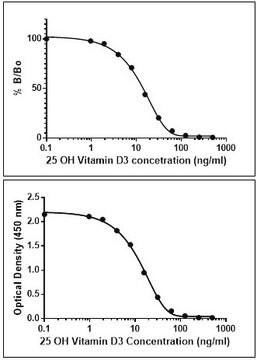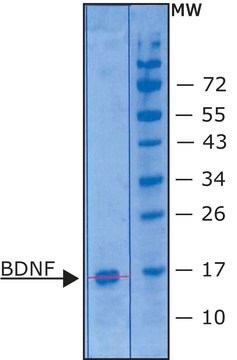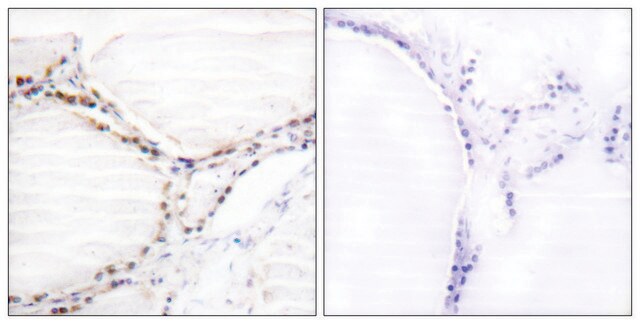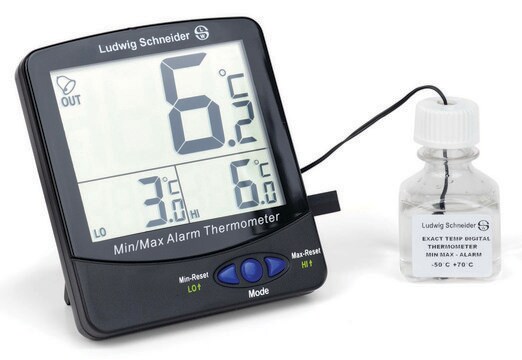おすすめの製品
由来生物
rat
抗体製品の状態
purified immunoglobulin
抗体製品タイプ
primary antibodies
クローン
9A7, monoclonal
化学種の反応性
chicken, rat, porcine, human
包装
antibody small pack of 25 μg
テクニック
immunohistochemistry: suitable (paraffin)
immunoprecipitation (IP): suitable
western blot: suitable
アイソタイプ
IgG2bκ
NCBIアクセッション番号
UniProtアクセッション番号
ターゲットの翻訳後修飾
unmodified
遺伝子情報
chicken ... Vdr(395988)
human ... VDR(7421)
詳細
Vitamin D3 receptor (UniProt: O42392; also known as VDR, 1,25-dihydroxyvitamin D3 receptor, Nuclear receptor subfamily 1 group I member 1) is encoded by the VDR (also known as NR1I1) gene (Gene ID: 395988) in chicken. VDR is a nuclear receptor for calcitriol, the active form of vitamin D3 that mediates the action of vitamin D on cells. VDR is expressed mainly in kidney and intestine and plays a central role in calcium homeostasis. In the absence of bound vitamin D3 it is present as a homodimer and it enters the nucleus upon vitamin D3 binding where it forms heterodimers with the retinoid X receptor/RXR. The VDR-RXR heterodimers bind to specific response elements on DNA and activate the transcription of vitamin D3-responsive target genes. It is recruited to promoters via its interaction with BAZ1B/WSTF, which mediates the interaction with acetylated histones that is considered to be an essential step for VDR-promoter association. Plays a central role in calcium homeostasis. VDR is composed of three domains: a modulating N-terminal domain, a DNA-binding domain, and a C-terminal ligand-binding domain. Two isoforms of VDR have been described that are produced by alternative initiation.
特異性
Clone 9A7 detects Vitamin D3 receptor in multiple avian and mammalian species.
免疫原
Partially purified chicken intestinal vitamin D receptor.
アプリケーション
Research Category
細胞シグナル伝達
細胞シグナル伝達
Anti-Vitamin D receptor, clone 9A7, Cat. No. MABS2028, is a rat monoclonal antibody that detects Vitamin D3 receptor and has been tested for use in , Immunohistochemistry (Paraffin), Immunoprecipitation, and Western Blotting.
Immunoprecipitation Analysis: A representative lot detected Vitamin D receptor in Immunoprecipitation applications (Pike, J.W., et. al. (1982). Proc Natl Acad Sci USA. 79(24); 7719-23).
Immunohistochemistry (Paraffin) Analysis: A 1:50 dilution from a representative lot detected Vitamin D receptor in human skin and human breast cancer tissue sections.
Immunohistochemistry (Paraffin) Analysis: A 1:50 dilution from a representative lot detected Vitamin D receptor in human skin and human breast cancer tissue sections.
品質
Evaluated by Western Blotting in MCF-7 cell lysate.
Western Blotting Analysis: 1 µg/mL of this antibody detected Vitamin D receptor in MCF-7 cell lysate.
Western Blotting Analysis: 1 µg/mL of this antibody detected Vitamin D receptor in MCF-7 cell lysate.
ターゲットの説明
~51 kDa observed; 51.3 kDa calculated. Uncharacterized bands may be observed in some lysate(s).
関連事項
Replaces: 04-1526
物理的形状
Protein G purified
Format: Purified
Purified rat monoclonal antibody IgG2b in buffer containing 0.1 M Tris-Glycine (pH 7.4), 150 mM NaCl with 0.05% sodium azide.
保管および安定性
Stable for 1 year at 2-8°C from date of receipt.
その他情報
Concentration: Please refer to lot specific datasheet.
免責事項
Unless otherwise stated in our catalog or other company documentation accompanying the product(s), our products are intended for research use only and are not to be used for any other purpose, which includes but is not limited to, unauthorized commercial uses, in vitro diagnostic uses, ex vivo or in vivo therapeutic uses or any type of consumption or application to humans or animals.
適切な製品が見つかりませんか。
製品選択ツール.をお試しください
試験成績書(COA)
製品のロット番号・バッチ番号を入力して、試験成績書(COA) を検索できます。ロット番号・バッチ番号は、製品ラベルに「Lot」または「Batch」に続いて記載されています。
Zixian Huang et al.
Cell death & disease, 10(12), 936-936 (2019-12-11)
Chemoresistance is a major cause of cancer progression and the mortality of cancer patients. Developing a safe strategy for enhancing chemosensitivity is a challenge for biomedical science. Recent studies have suggested that vitamin D supplementation may decrease the risk of
ライフサイエンス、有機合成、材料科学、クロマトグラフィー、分析など、あらゆる分野の研究に経験のあるメンバーがおります。.
製品に関するお問い合わせはこちら(テクニカルサービス)





